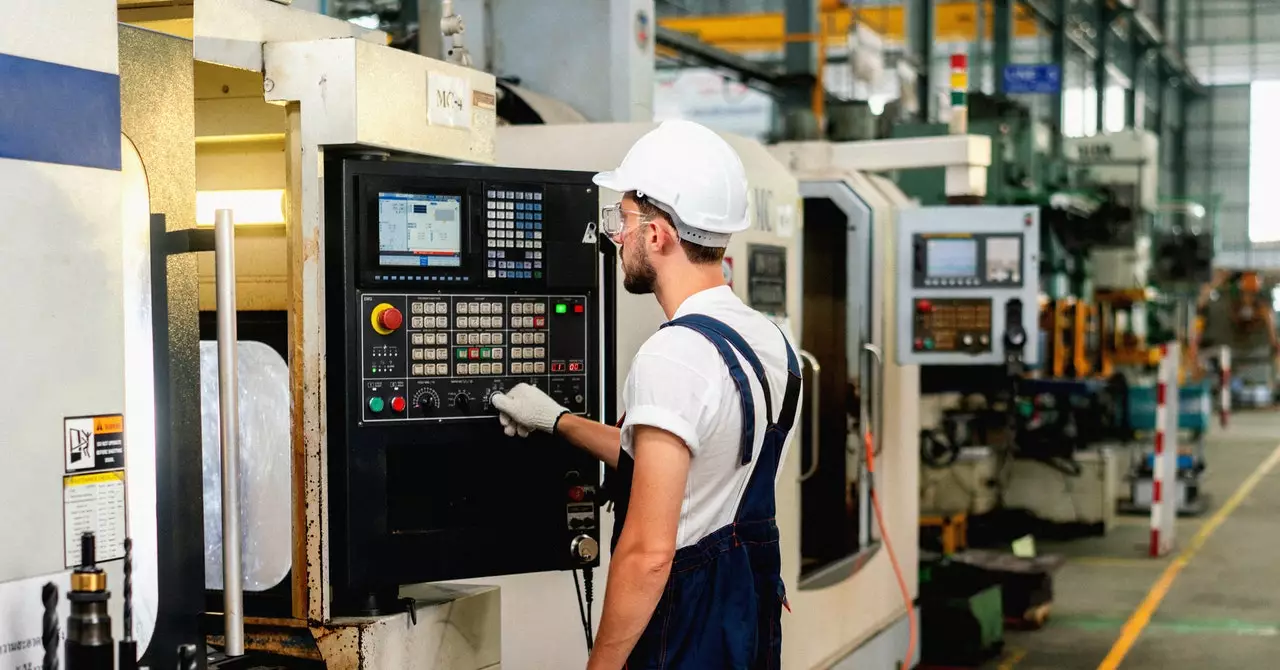In the realm of modern manufacturing, the art of grinding steel ball bearings has seen remarkable evolution since its inception over a century ago. While the core machinery responsible for this intricate grinding process has retained its fundamental design, the surrounding operations have undergone a radical transformation through automation. This shift signifies a move towards a more efficient and streamlined production line, where human intervention is becoming increasingly redundant, particularly in areas such as troubleshooting defects; a task that may eventually be handed over to artificial intelligence (AI).
At the Schaeffler factory in Hamburg, the manufacturing journey of steel ball bearings begins with high-quality steel wire, which is precisely cut and shaped into rough spherical forms. The subsequent hardening phase involves a series of advanced furnaces that ensure these balls enhance their mechanical properties. Once hardened, the balls undergo a meticulous grinding process through three distinct stages, each grinding them down to an impressive spherical accuracy of within ten microns. This level of precision is paramount, as it is critical for their application in various low-friction systems that power machinery from lathes to automotive engines.
Achieving such accuracy necessitates continuous monitoring and testing to detect defects at any stage of production. However, identifying the root cause of these defects can be a complex endeavor. It may stem from a myriad of issues, such as an incorrectly calibrated screwing tool or wear and tear on grinding wheels. The challenge lies in tracing these problems through a network of manufacturing equipment, and traditionally, this has demanded significant human oversight and intervention.
In light of these challenges, Schaeffler has embraced cutting-edge solutions, marking its territory as an early adopter of Microsoft’s Factory Operations Agent. This innovative tool leverages large language models to scrutinize various data points within the manufacturing realm, functioning in a manner akin to a sophisticated chatbot tailored for industrial environments. By correlating real-time data from the production line, this AI system can assist workers in unraveling the complexities surrounding defects, downtime, and inefficiencies in energy use.
Kathleen Mitford, Microsoft’s corporate vice president of global industry marketing, aptly characterizes the tool as a “reasoning agent.” It can comprehend intricate queries related to manufacturing processes and yield accurate responses grounded in standardized data models. For instance, a worker questioning why defect levels have spiked can receive insights derived from a comprehensive analysis of the entire operational framework.
One of the standout features of this deep learning system lies in its integration with Microsoft’s enterprise data analytics framework, Microsoft Fabric. The synergy between operational technology (OT) data and the AI agent allows for a robust platform that Schaeffler can harness across its global operations. With the ability to aggregate and analyze data from hundreds of plants, the scope of the analysis presented to operational staff is unprecedented.
Stefan Soutschek, the vice president overseeing IT at Schaeffler, emphasizes that the greatest advantage lies not merely in the chat-like interface of the assistant but rather in the amalgamation of data systems that feed into its functionality. “While the chatbot itself is a helpful tool, it is the comprehensive analysis of OT data that empowers teams to make informed decisions,” he asserts, reflecting on the multifaceted benefits that arise from this technological synergy.
Despite its advanced capabilities, it is essential to clarify that the AI being employed does not possess agency or autonomous decision-making capacity. Instead, it functions primarily as an enhanced data-access tool, responding only to inquiries that users pose. While there are opportunities to configure the assistant to perform routine tasks through Microsoft’s Copilot studio, the system is not designed to assume responsibilities typically managed by human operators.
The increasing reliance on AI in manufacturing raises important questions about the future of human roles in production environments. As technology continues its advancement, the potential for AI to take on more complex decision-making tasks may alter the landscape of manufacturing jobs. Nonetheless, the essence of human insight and accountability is likely to remain vital, especially in overseeing systems that are inherently intricate.
The integration of AI within the steel ball bearing manufacturing process represents just the tip of the iceberg in industry automation. As companies like Schaeffler take bold strides towards innovation, the interplay between human skill and artificial intelligence will undoubtedly shape the future of manufacturing, leading to greater efficiency, precision, and reliability in the production of critical components.


Leave a Reply